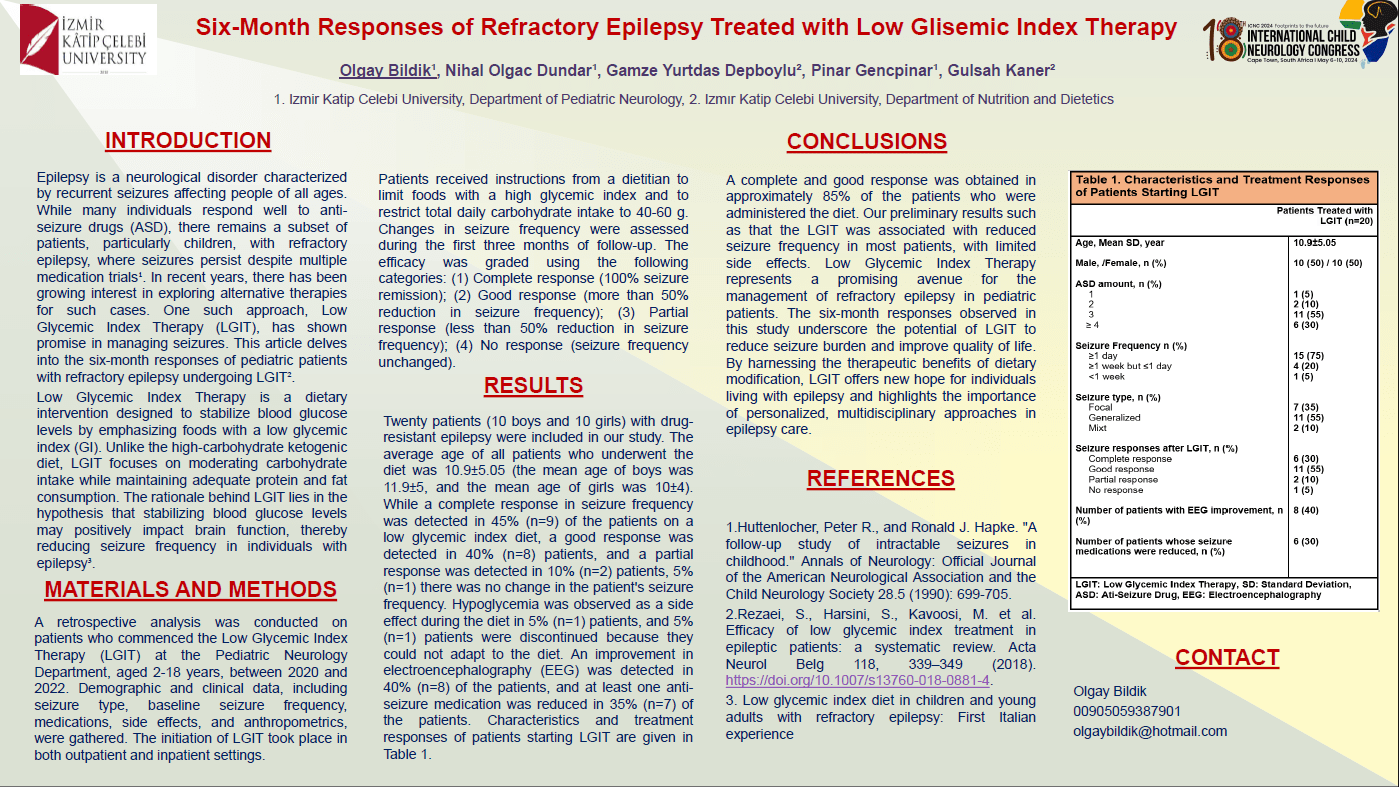Six-Month Responses Of Patients With Refractory Epilepsy Treated With Low Glycemic Index Therapy
Objectives: In spite of the majority of children with epilepsy respond well to antiepileptic drugs and remain well-controlled, 25 %–30 % remain resistant to these drugs (1). Low glycemic index therapy (LGIT) is one of the alternative diet types to the ketogenic diet (2). In this study, we aimed to report the efficacy, safety and tolerability of LGIT in our pediatric refractory epilepsy patients.
Methods:A retrospective overview turned into completed on sufferers starting up the LGIT on the Pediatric Neurology Department , elderly 2-18 years. Initiation of the LGIT turned into finished in an out/inpatient setting. Efficacy turned into graded the use of the subsequent categories: (1) Complete response (100% seizure remission); (2) Good response (more than 50% reduction in seizure frequency); (3) Partial response (less than 50% reduction in seizure frequency); (4) No response (seizure frequency unchanged).
Results: Twenty patients with drug-resistant epilepsy were included in our study. The average age of all patients who underwent the diet was 10.9±5.05. While a complete response in seizure frequency was detected in 45% (n=9) of the patients on a low glycemic index diet, a good response was detected in 40% (n=8) patients, and a partial response was detected in 10% (n=2) patients, 5% (n=1) there was no change in the patient's seizure frequency. Hypoglycemia was observed as a side effect while during the diet in 5% (n=1) patients.
Conclusion: Our preliminary results such as that the LGIT was associated with reduced seizure frequency (%85) in most patients, with limited side effects.
OLGAY BILDIK
University of Health Sciences, Tepecik Training and Research Hospital
Turkey
Nihal Olgac Dundar
Izmır Katip Celebı Universıty Faculty of Medicine
Turkey
Gamze Yurtdas Depboylu
Izmır Katip Celebı Universıty Faculty of Medicine
Turkey
Pinar Gencpinar
Izmır Katip Celebı Universıty Faculty of Medicine
Turkey
Gulsah Kaner
Izmır Katip Celebı Universıty Faculty of Medicine
Turkey

OLGAY BILDIK
University of Health Sciences, Tepecik Training and Research Hospital
Turkey